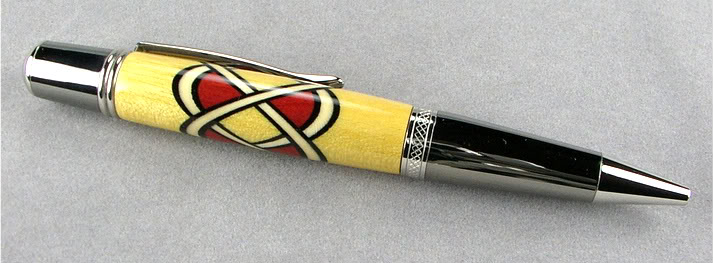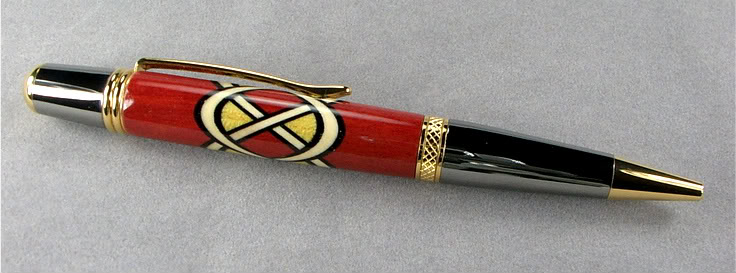Ron4701
Member
I've made pens with single ring laminations, but now I'd like to make some pens with celtic knots for Christmas gifts.
I understand the basics of making the cuts in the blanks thanks to tutorials I've seen on this and other sites. My questions concern the inlays.
I know the inlays must be the same thickness as the kerf, or slightly less to account for glue.
What is the best way to make inlays the proper thickness to fit a bandsaw kerf? A table saw is a tad too wide, but even then the inlays would have to be trimmed, somehow, to the kerf thickness.
Is grain orientation an issue?
I've seen 2 and 3 layer inlays that were still fairly thin. It seems the layers of the inlay must be paper thin. How is this done?
What is the recommended glue for securing the inlays (CA or epoxy)?
I'm assuming all, or most, inlays are wood. Would something like plastic work as well?
I've seen many inlays that are just too brightly colored to be natural wood color. Is this done by dying or staining the inlay?
Thanks,
Ron
I understand the basics of making the cuts in the blanks thanks to tutorials I've seen on this and other sites. My questions concern the inlays.
I know the inlays must be the same thickness as the kerf, or slightly less to account for glue.
What is the best way to make inlays the proper thickness to fit a bandsaw kerf? A table saw is a tad too wide, but even then the inlays would have to be trimmed, somehow, to the kerf thickness.
Is grain orientation an issue?
I've seen 2 and 3 layer inlays that were still fairly thin. It seems the layers of the inlay must be paper thin. How is this done?
What is the recommended glue for securing the inlays (CA or epoxy)?
I'm assuming all, or most, inlays are wood. Would something like plastic work as well?
I've seen many inlays that are just too brightly colored to be natural wood color. Is this done by dying or staining the inlay?
Thanks,
Ron



